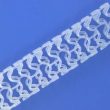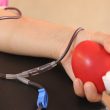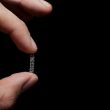Courtesy of Dr. Carlos Fava. Nowadays, chronic total occlusions (CTO) due to in-stent restenosis (ISR) represent 5%-25% of all coronary angioplasties. These lesions pose a new and true challenge, since CTOs are often associated with stent-related problems (fractures, lack of expansion, overlapping, deformation), extreme tortuosity, severe calcification, tandem lesions after CTO, and aorto-ostial lesions, with little<a href="https://solaci.org/en/2017/06/26/success-in-ctos-caused-by-restenosis-lowers-cardiac-mortality/" title="Read more" >...</a>
The use of IVUS in unprotected left main PCI associated to better outcomes, compared to angiography guided PCI
Courtesy of Dr. Gustavo Leiva. Coronary Artery Bypass Graft (CABG) has traditionally been the procedure of choice in patients with left main coronary artery disease. However, the use of percutaneous techniques in this kind of lesions has been on the rise, partly due to recent research showing similar outcomes with both procedures. Unprotected left main<a href="https://solaci.org/en/2017/06/26/the-use-of-ivus-in-unprotected-left-main-pci-associated-to-better-outcomes-compared-to-angiography-guided-pci/" title="Read more" >...</a>
Everolimus DES are more effective and less costly than conventional BMS
Courtesy of Dr. Guillermo Migliaro. Drug eluting stents (DES) represented the greatest technological advance in the treatment of instent restenosis from conventional metallic stents (BMS), especially cobalt chromium everolimus eluting stents (CoCr EES), which have shown an excellent profile, and are mostly safer, compared to first generation DES. Indeed, several randomized studies and meta-analyzis have<a href="https://solaci.org/en/2017/06/16/everolimus-des-are-more-effective-and-less-costly-than-conventional-bms/" title="Read more" >...</a>
Biodegradable-polymer stents are as safe as permanent-polymer stents in a 5-year follow-up
Courtesy of Dr. Carlos Fava. One of the questions around drug-eluting stents (DES) is whether the development of biodegradable polymers would derive in better outcomes than the performance of durable polymers as regards the presence of events. In consequence, the COMPARE II trial was carried out with the aim of testing them in “real-world” patients. This<a href="https://solaci.org/en/2017/06/13/biodegradable-polymer-stents-are-as-safe-as-permanent-polymer-stents-in-a-5-year-follow-up/" title="Read more" >...</a>
Are 7 Fr Dedicated Transradial Introducers Safe?
Courtesy of Dr. Carlos Fava. The transradial approach has been proven beneficial for quite some time now, but certain scenarios require the use of a 7 Fr or 8 Fr introducer, which is a great limitation. This study included 60 patients who underwent complex angioplasty with the help of 7 Fr dedicated transradial (TR) introducer Glidesheath Slender (Terumo, Tokyo,<a href="https://solaci.org/en/2017/06/06/are-7-fr-dedicated-transradial-introducers-safe/" title="Read more" >...</a>
EuroCTO: Rechanneling vs. Optimal Medical Treatment in Total Occlusions
Courtesy of the SBHCI. Chronic total occlusions represent around 18% of all coronary lesions. However, they account for just 5% of all interventions, which means that many patients only receive medical treatment. This prospective, open, multicenter study randomized patients with multivessel lesions in whom at least one of these was a chronic total occlusion. Patients<a href="https://solaci.org/en/2017/06/02/eurocto-rechanneling-vs-optimal-medical-treatment-in-total-occlusions/" title="Read more" >...</a>
Leaders Free ACS: Good Results for the Polymer-Free Stent at 2 Years in ACS
Courtesy of the SBHCI. Guidelines recommend dual antiplatelet therapy for a year in patients admitted with coronary acute syndrome. However, patients at high risk for bleeding who receive coronary angioplasty have been historically excluded from studies. The new polymer-free stent BioFreedom allows for the reduction of dual antiplatelet therapy time, due to rapid drug elution<a href="https://solaci.org/en/2017/05/30/leaders-free-acs-good-results-for-the-polymer-free-stent-at-2-years-in-acs/" title="Read more" >...</a>
Second-Generation DES Present Lower Mortality Rates for Vein Grafts
Courtesy of Dr. Carlos Fava. The treatment of vein graft lesions has always been difficult in relation to angioplasty, due to their characteristics. While drug-eluting stents (DES) have proven to be superior to bare-metal stents (BMS) for coronary arteries, such superiority is unclear as regards vein grafts. Several studies with first-generation DES (DES1) have even reported<a href="https://solaci.org/en/2017/05/24/second-generation-des-present-lower-mortality-rates-for-vein-grafts/" title="Read more" >...</a>
TOPIC: Benefits of Switching Dual Antiplatelet Therapy in Patients with ACS
Newer P2Y12 blockers are the front-line treatment and dual antiplatelet therapy is indicated for 1 year after acute coronary syndrome (ACS). Both prasugrel and ticagrelor offer more ischemic benefit than clopidogrel during the initial phase; however, bleeding complications could increase in the long term. The objective of this study was to assess the safety and efficacy<a href="https://solaci.org/en/2017/05/23/topic-benefits-of-switching-dual-antiplatelet-therapy-in-patients-with-acs/" title="Read more" >...</a>
Follow-up at 10 years for invasive vs. conservative strategy for non-ST-segment elevation infarction
The ICTUS (Invasive Versus Conservative Treatment in Unstable Coronary Syndromes) trial compared early invasive strategy with a selective invasive strategy in patients with non-ST-segment elevation acute coronary syndrome (NSTE-ACS), with elevated markers such as cardiac troponin T. The absence of long-term benefit of an early invasive strategy at 1 and 5 years had already been reported.<a href="https://solaci.org/en/2017/05/09/follow-up-at-10-years-for-invasive-vs-conservative-strategy-for-non-st-segment-elevation-infarction/" title="Read more" >...</a>









